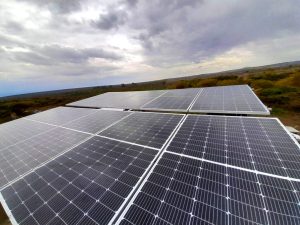Solar Power Systems for Commercial Buildings

With rising energy costs and increasing environmental concerns, businesses are looking for ways to cut expenses and reduce their carbon footprint. One of the most effective solutions? Solar power systems for commercial buildings. Harnessing the sun’s energy allows businesses to power their operations sustainably while saving significantly on electricity bills.
Benefits of Solar Energy for Businesses
1.Cost Savings and Return On Investments
Switching to solar power drastically reduces electricity bills. Over time, businesses can achieve a high return on investment (ROI), often recovering installation costs within a few years.
2.Environmental Impact and Sustainability
Solar energy reduces reliance on fossil fuels, cutting carbon emissions and promoting a cleaner environment. Companies adopting solar contribute to global sustainability goals and align with eco-friendly business practices.
3.Energy Independence and Reliability
Businesses relying on solar power are less affected by fluctuating utility rates and power outages. Solar systems with battery storage ensure a stable energy supply, improving operational continuity.
Corporate Social Responsibility (CSR) and Brand Image
Consumers and investors increasingly prefer environmentally responsible businesses. Going solar enhances a company’s CSR profile, demonstrating commitment to sustainability and social good.
Types of Solar Power Systems for Commercial Use
Grid-Tied Solar Systems
These systems are connected to the main power grid, allowing businesses to draw electricity when needed and sell excess energy back to the grid.
Off-Grid Solar Systems
Off-grid systems operate independently from the utility grid, making them ideal for remote locations. They require battery storage to maintain a continuous power supply.
Hybrid Solar Systems
Hybrid systems combine solar panels with battery storage and grid connectivity, offering businesses the best of both worlds—energy independence with grid backup when necessary.
Key Components of a Commercial Solar Power System
Solar Panels
Photovoltaic (PV) panels convert sunlight into electricity. Choosing high-efficiency panels ensures maximum energy production.
Inverters
Inverters convert DC electricity from solar panels into AC electricity, which powers commercial appliances and machinery.
Battery Storage Solutions
Battery storage allows businesses to store excess energy for use during peak hours or power outages.
Mounting and Racking Systems
Proper mounting ensures optimal sun exposure and system longevity, whether installed on rooftops or ground-mounted.
Monitoring and Maintenance Systems
Advanced monitoring systems provide real-time data on energy production and consumption, helping businesses optimize performance and detect issues early.
Steps to Implement a Solar Power System for a Commercial Building
Site Assessment and Energy Audit
A professional site evaluation determines the best solar setup based on roof space, energy consumption, and sun exposure.
System Design and Sizing
Proper system sizing ensures that the solar setup meets the business’s energy needs efficiently.
Installation and Commissioning
Professional installers ensure that the system is properly mounted, connected, and tested before activation.
Monitoring and Maintenance
Regular maintenance and monitoring prevent performance degradation and ensure long-term efficiency.
Challenges and Considerations
Initial Investment Costs
While solar power has long-term savings, upfront costs can be high. Financing options may help ease this burden.
Space and Structural Requirements
Large commercial buildings need adequate roof space or land for solar panel installation.
Regulatory and Permitting Challenges
Businesses must comply with local laws and obtain permits before installation.
Maintenance and Performance Monitoring
Regular cleaning, inspections, and software updates ensure optimal system performance.
Future Trends in Commercial Solar Power
Advances in Solar Panel Efficiency
New technologies are increasing solar panel efficiency, making systems more cost-effective and powerful.
Energy Storage Innovations
Improvements in battery technology allow businesses to store more energy for longer periods.
Smart Grid Integration
Solar systems are increasingly integrating with smart grids, enabling better energy management and grid stability.
Conclusion
Investing in solar power for commercial buildings is a smart move for businesses looking to cut costs, boost sustainability, and enhance brand reputation. As technology advances and incentives grow, the transition to solar becomes even more attractive. Now is the time for businesses to harness the sun and take control of their energy future.
For enquiries or installations, reach out to us via:
Phone: 0759493610
Email: info@voltmaticenergysolutions.co.ke
